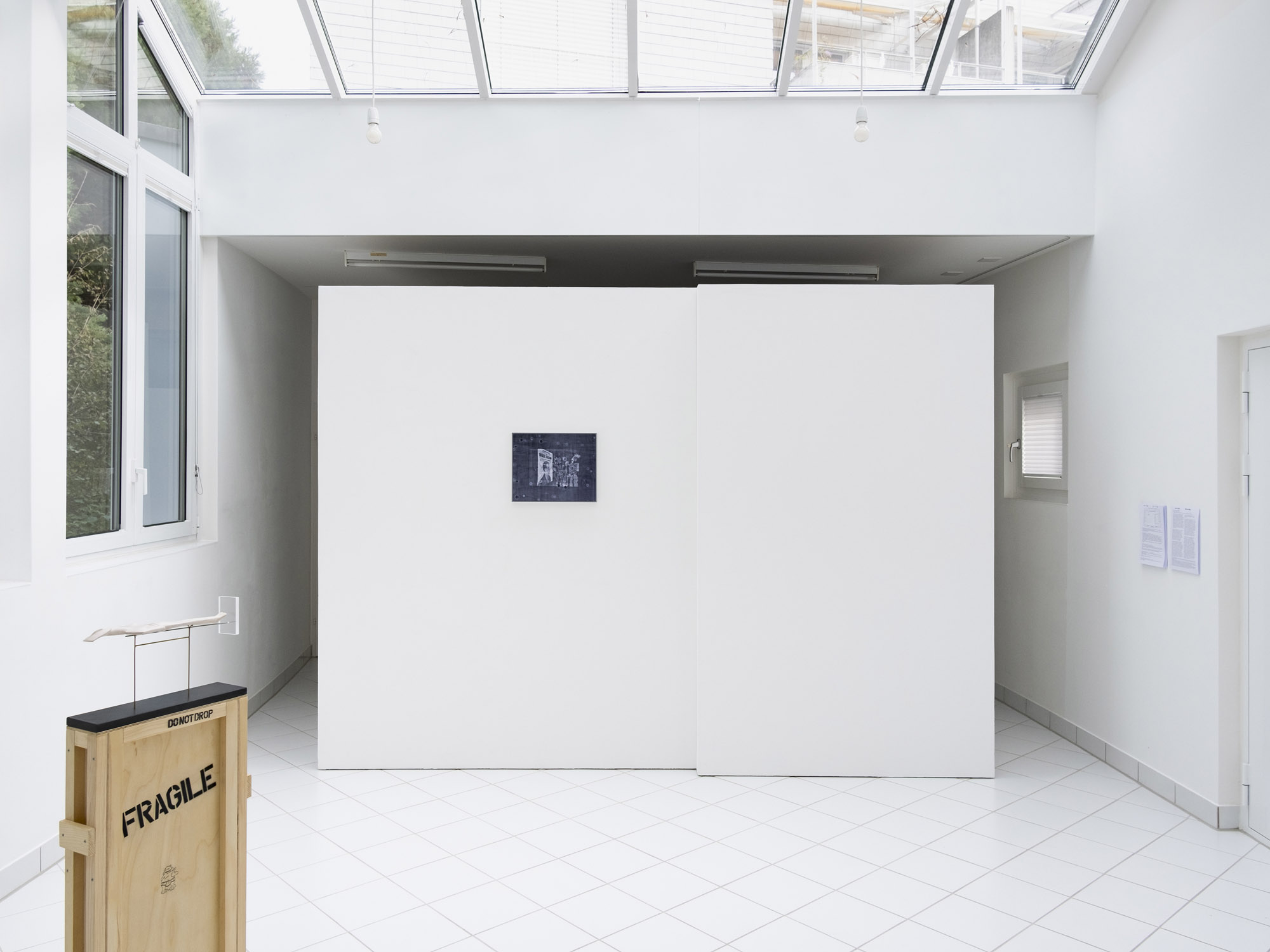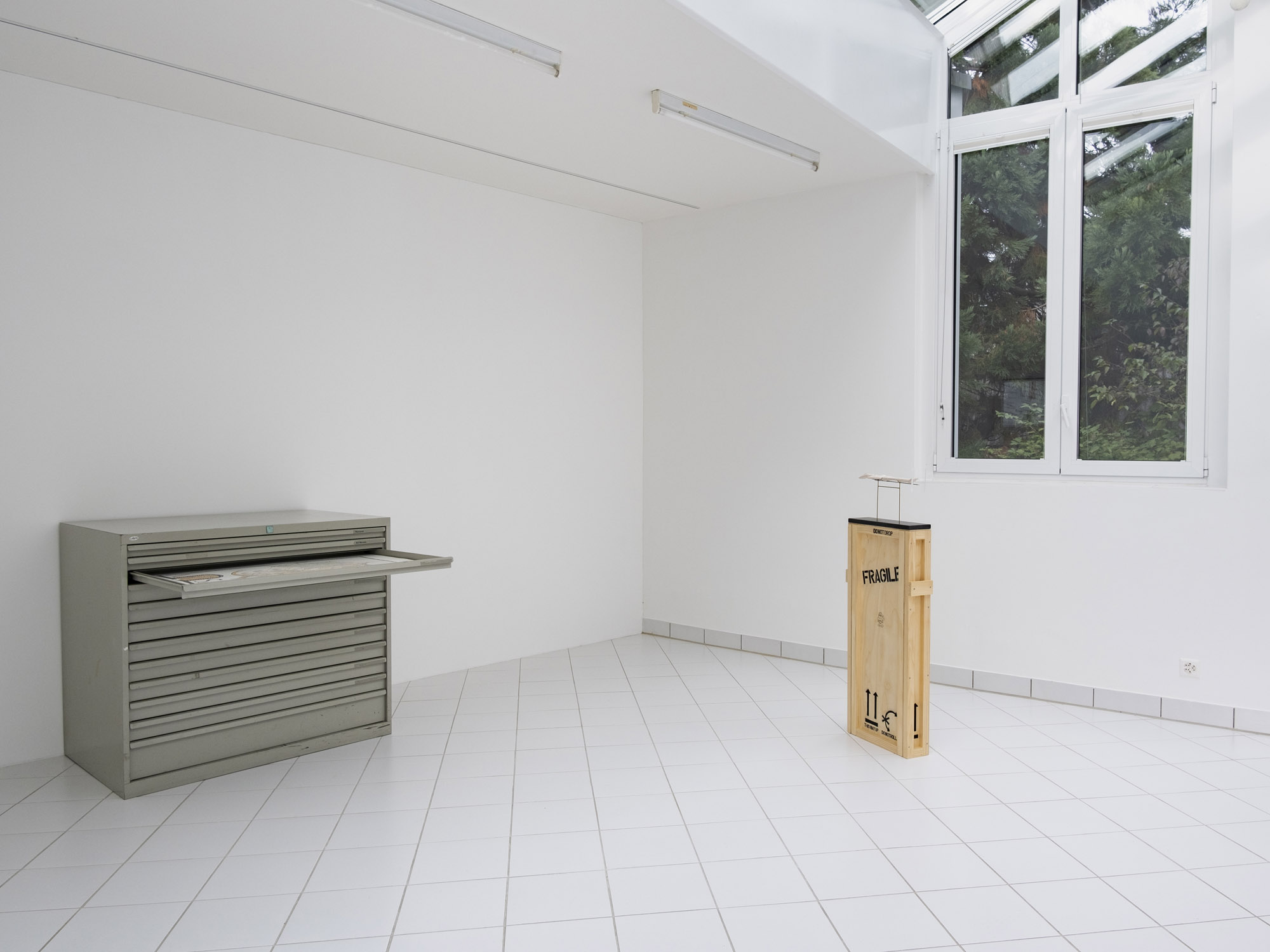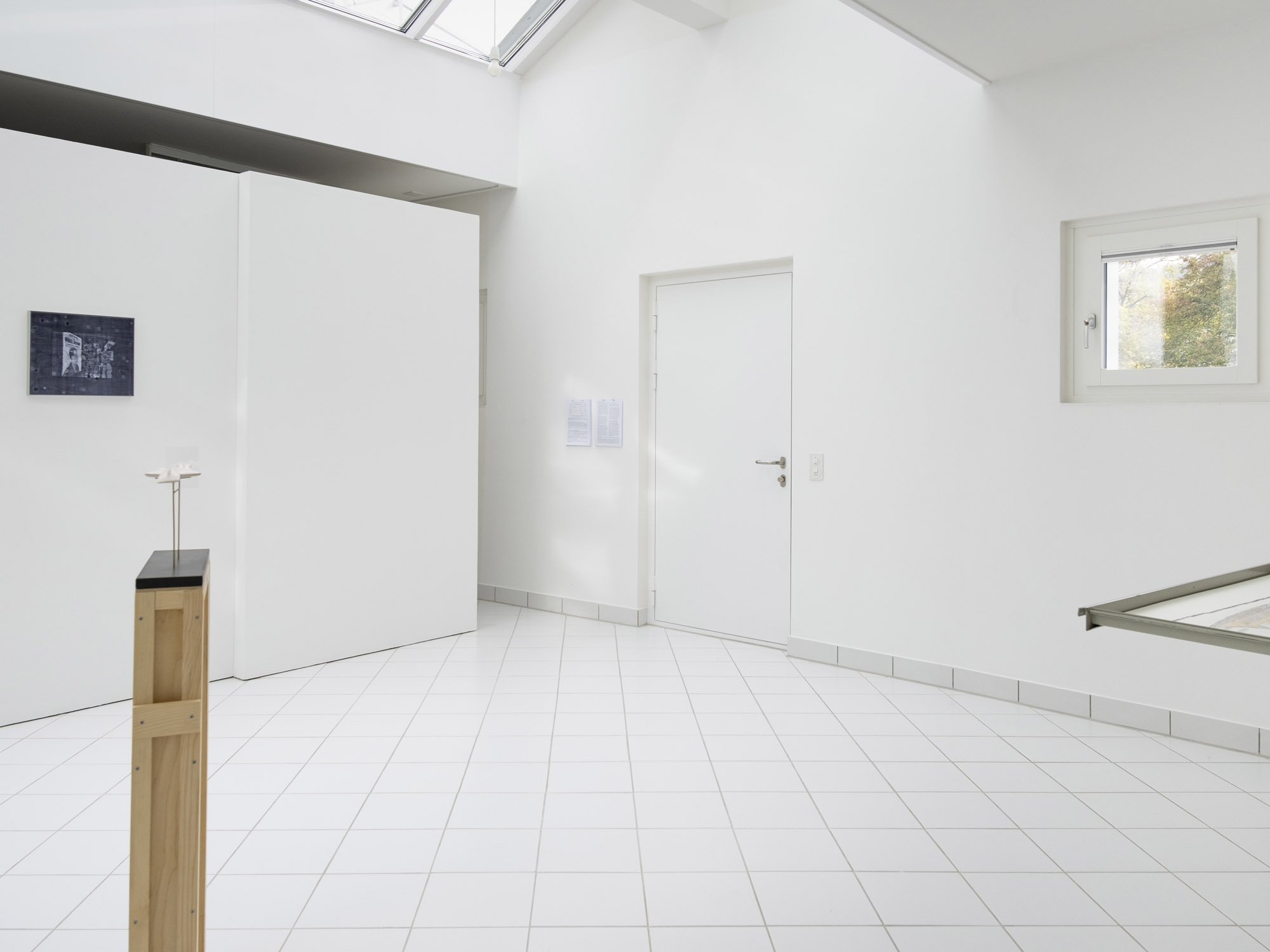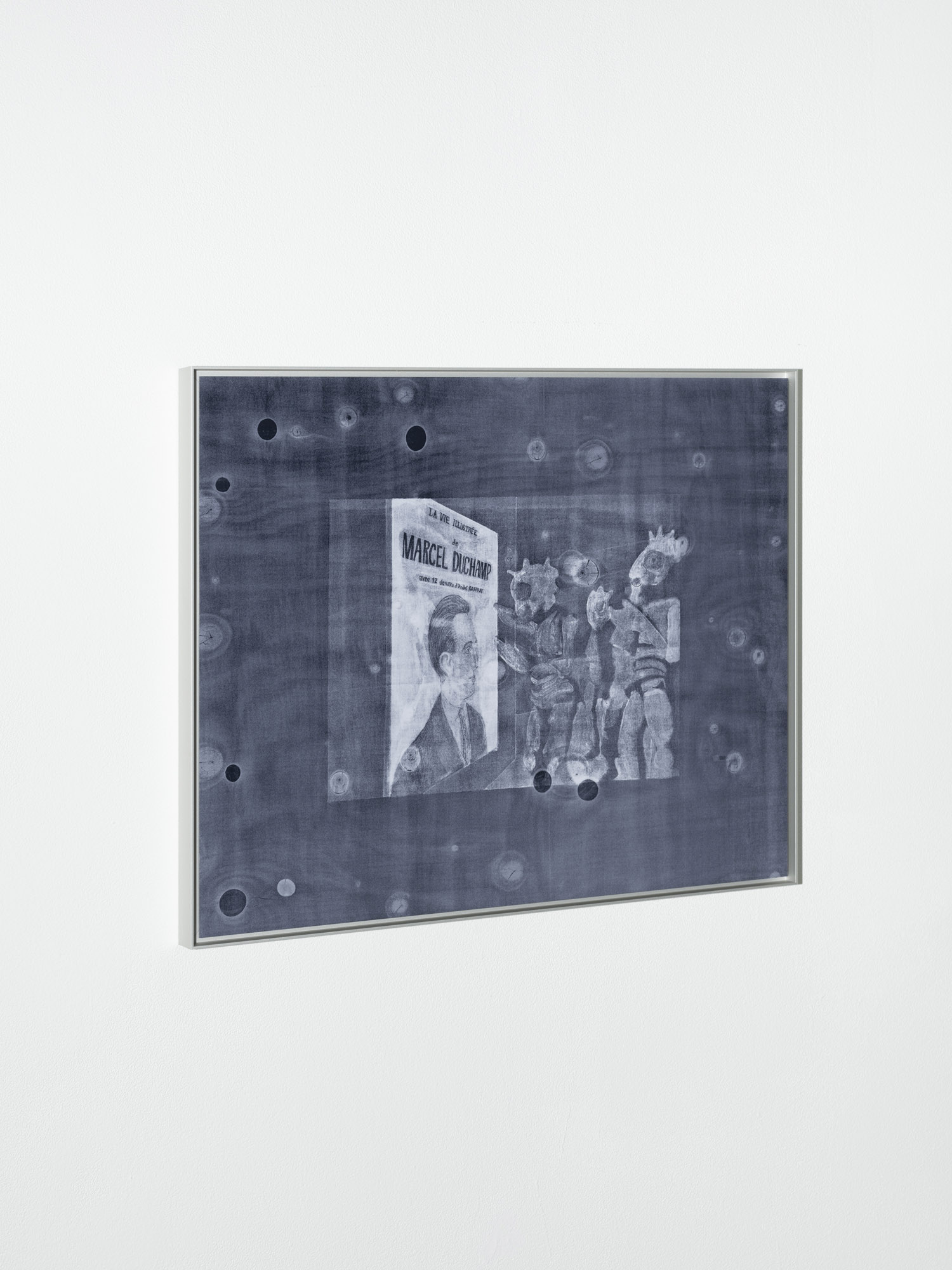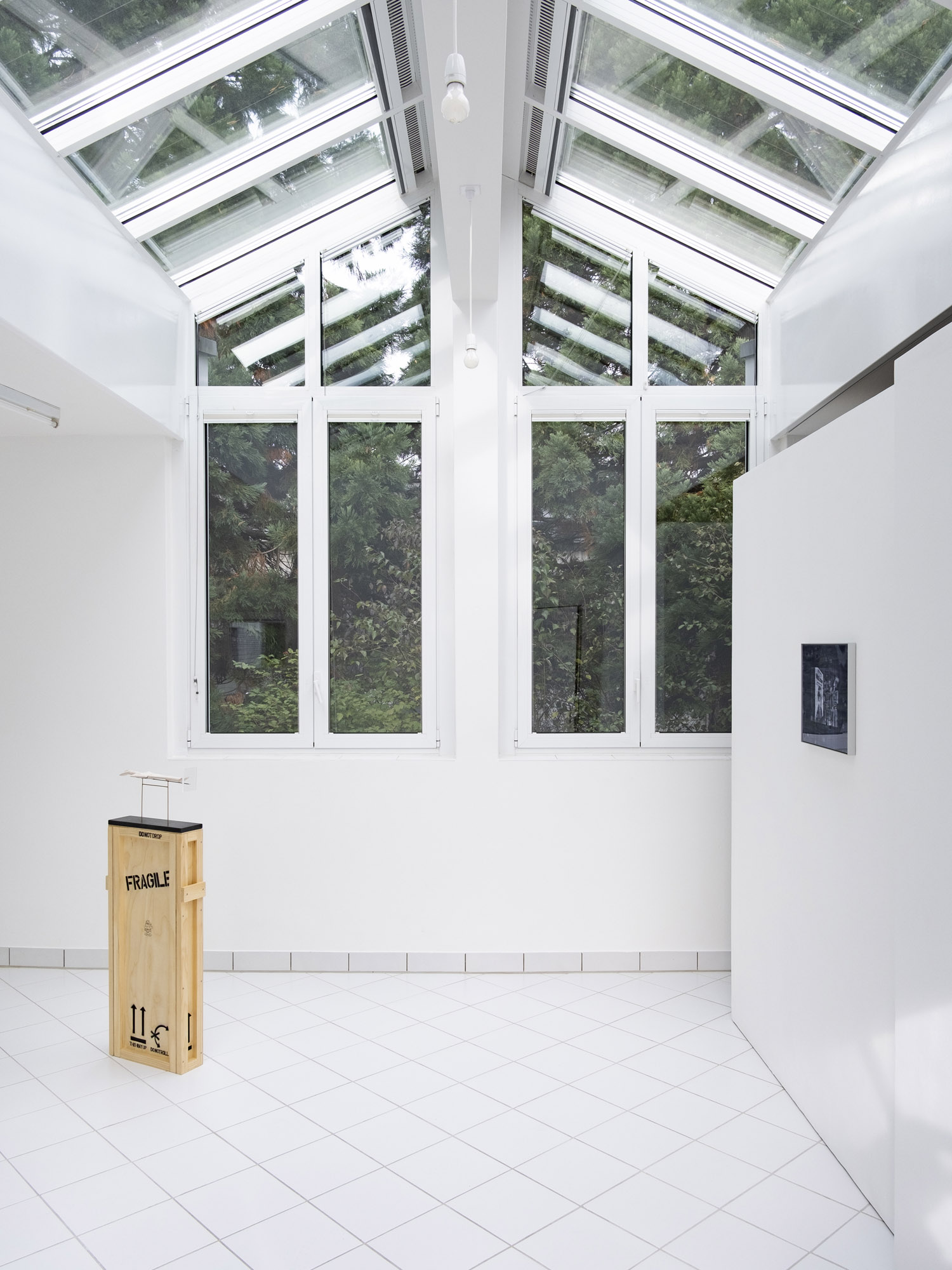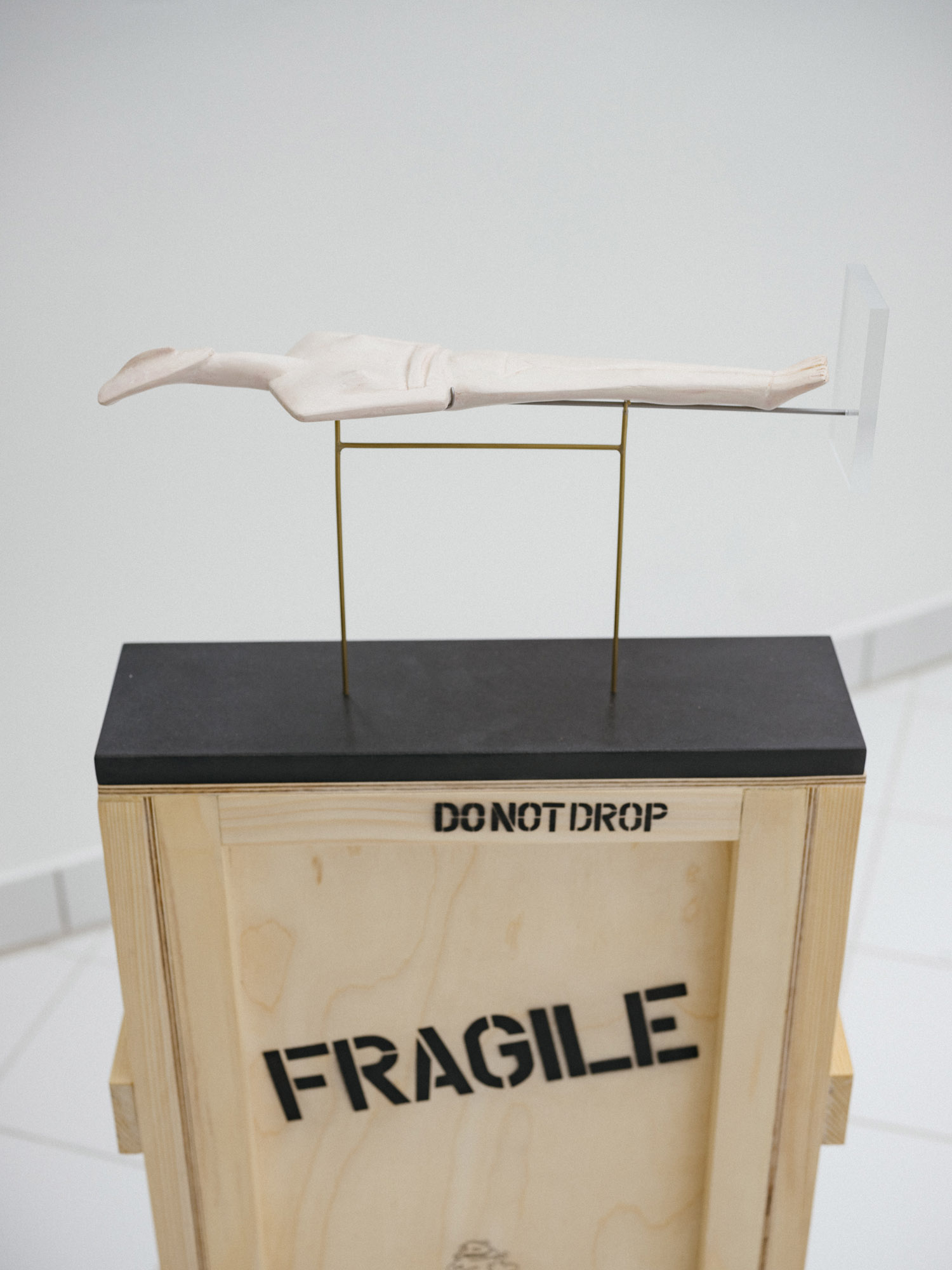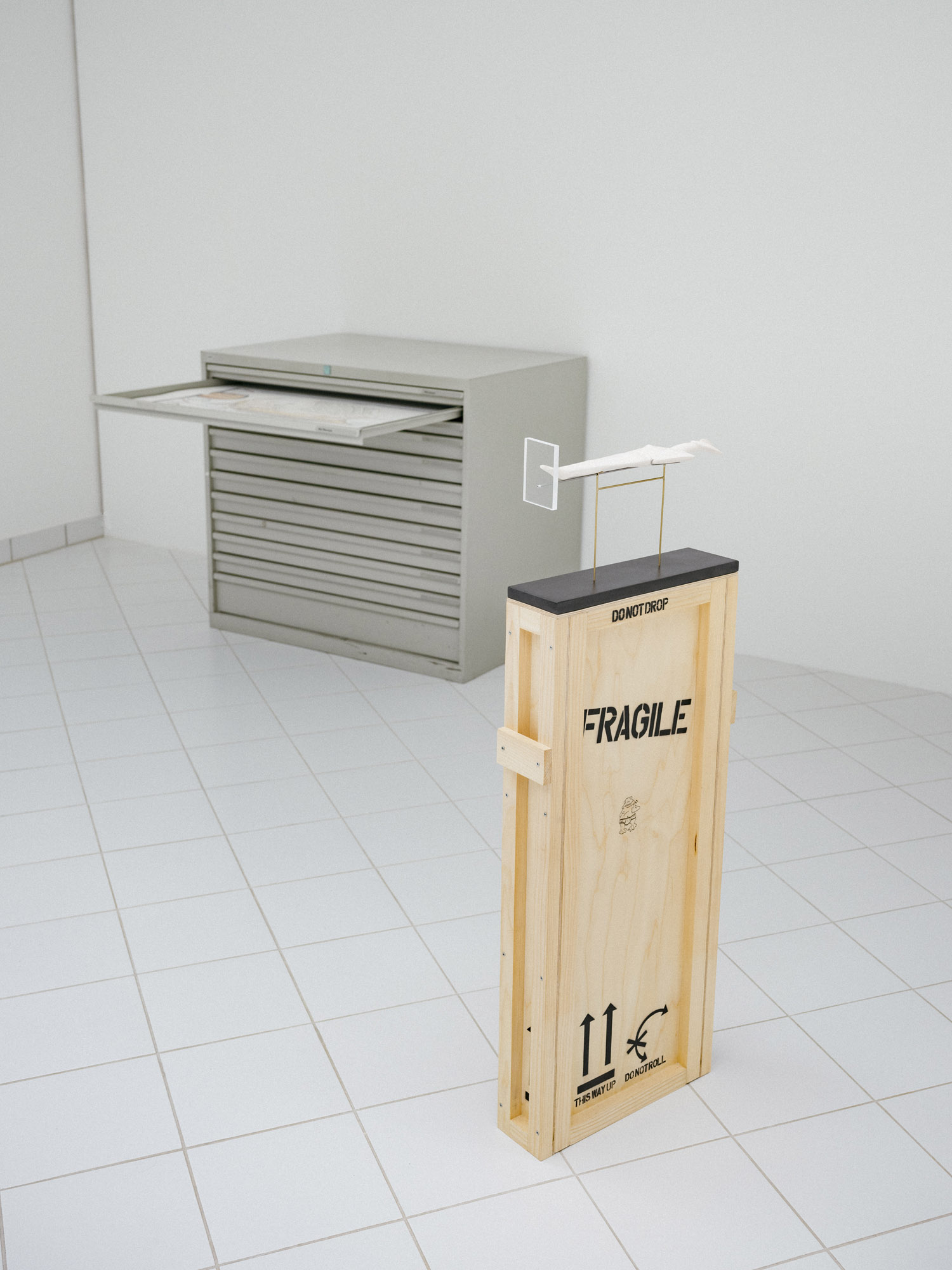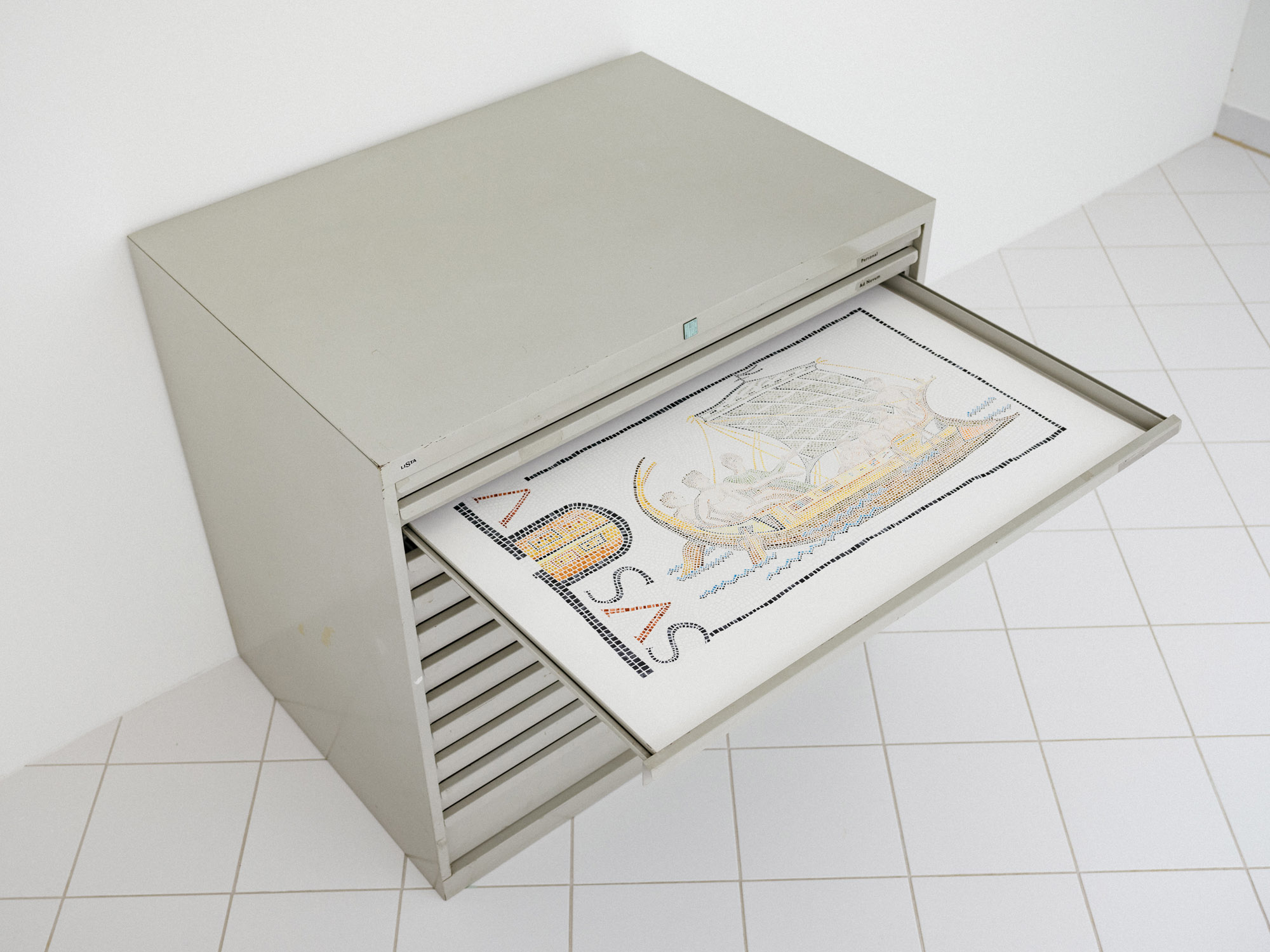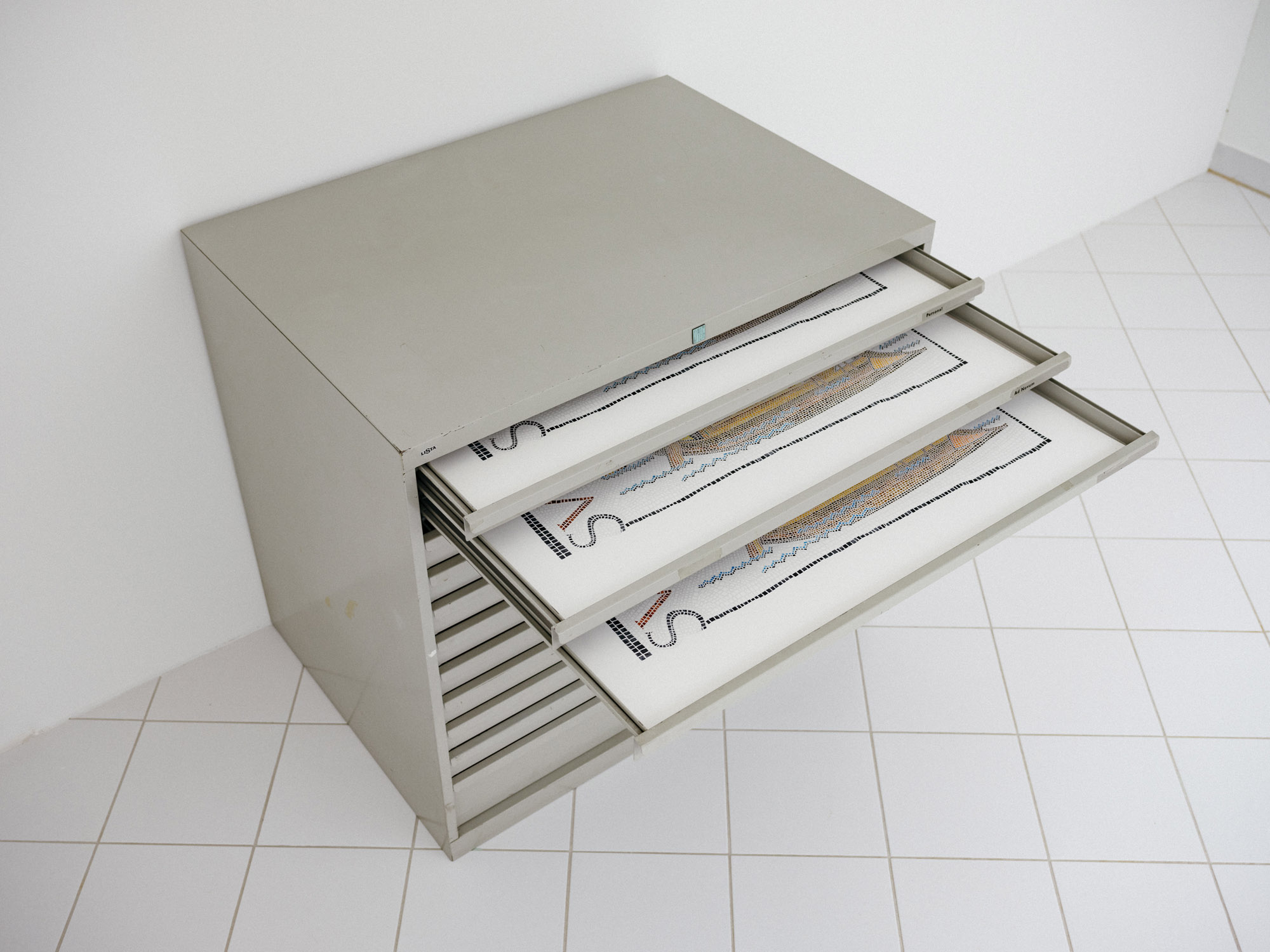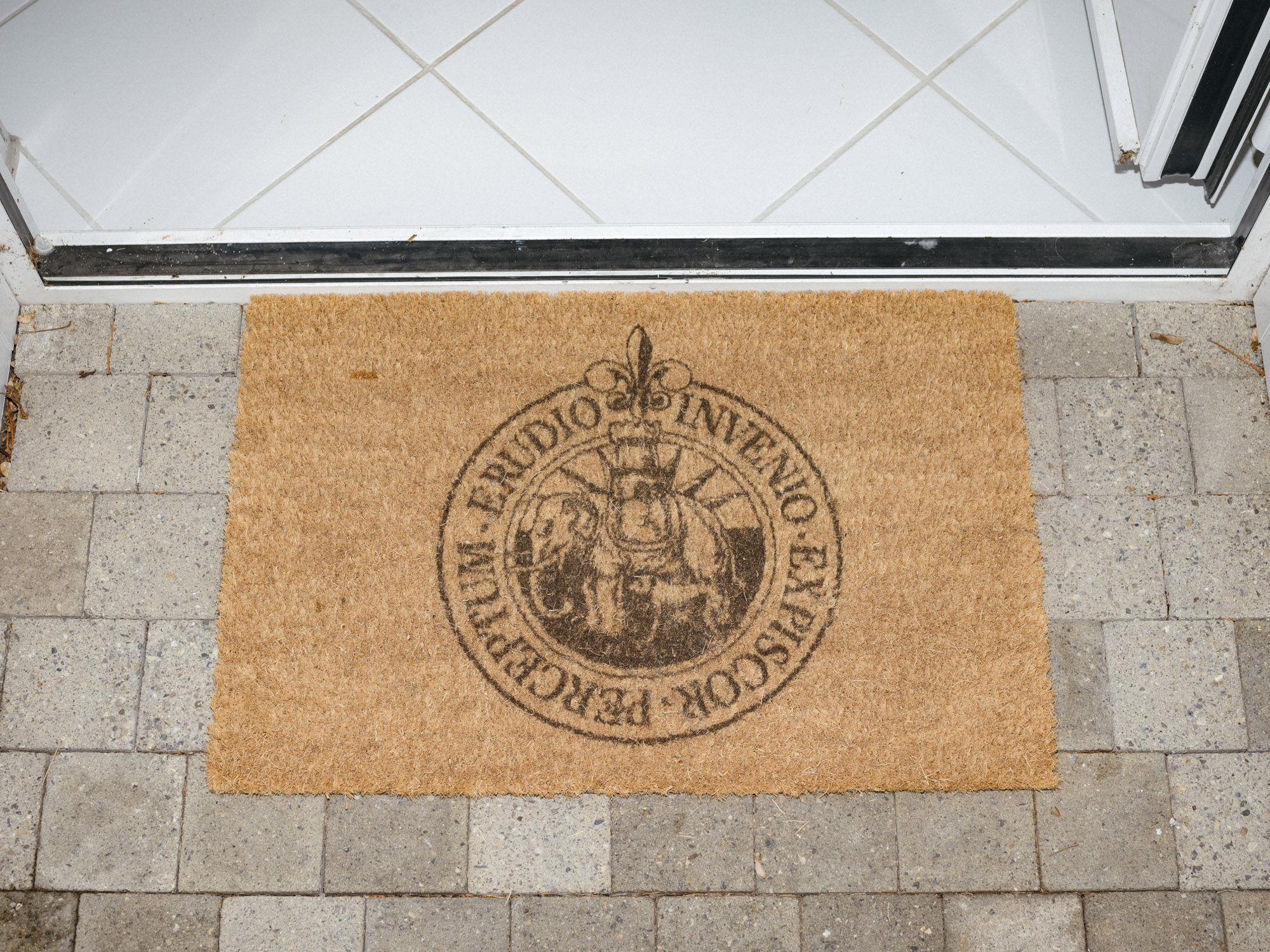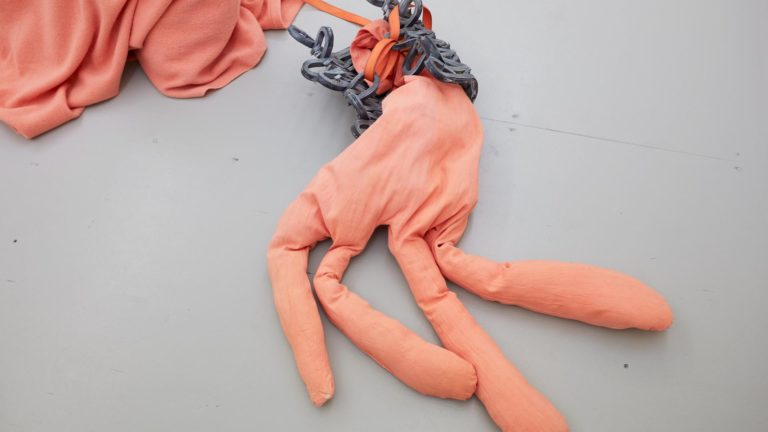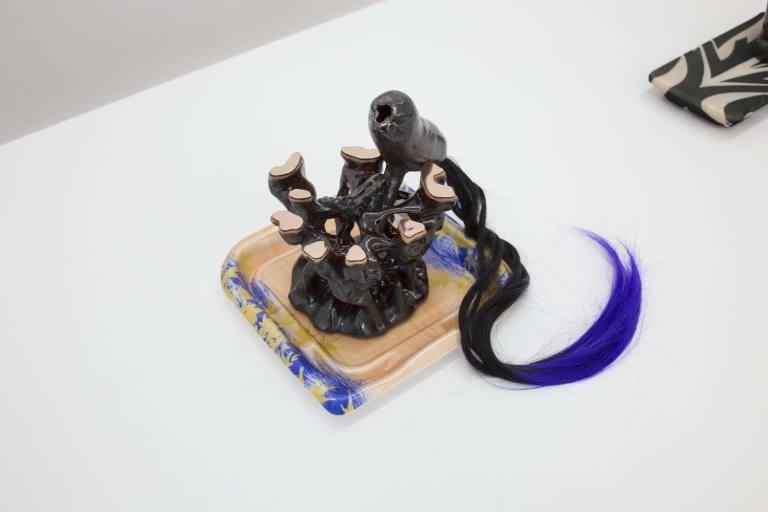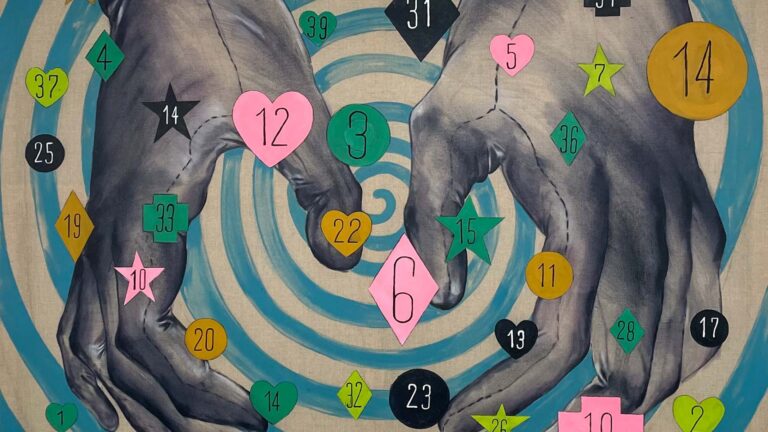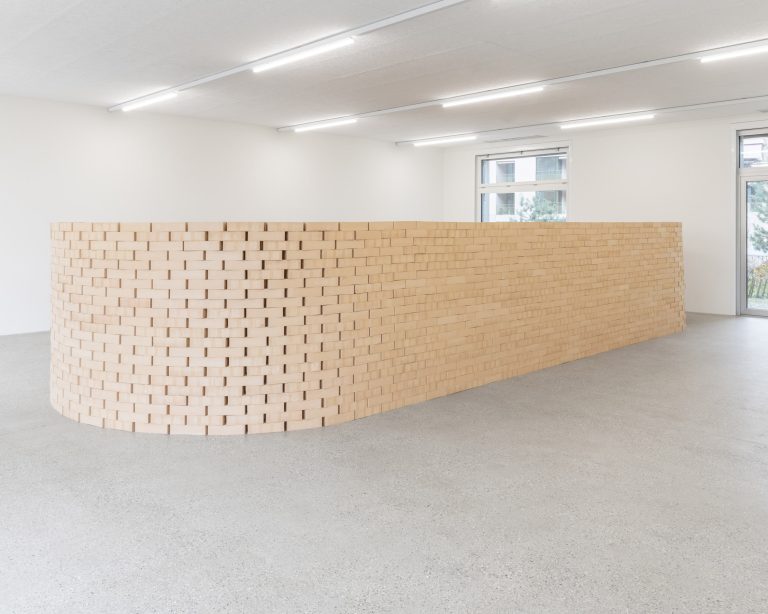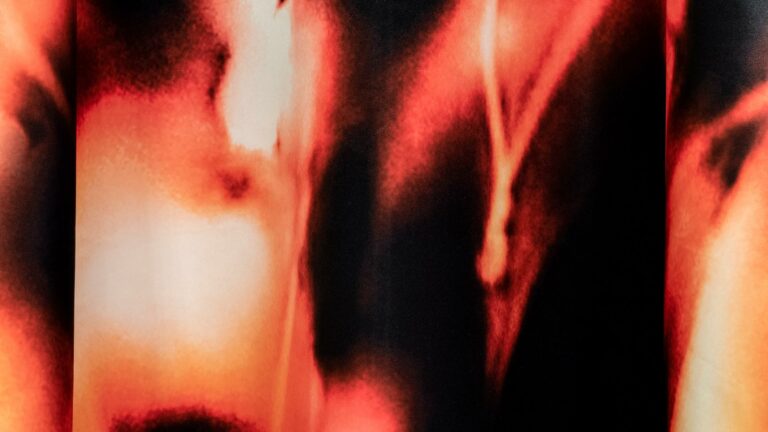Artist: Mathias Pfund
Exhibition title: That belongs in a museum!
Venue: A.ROMY, Zurich, Switzerland
Date: November 10, 2022 – January 12, 2023
Photography: all images copyright and courtesy of the artist and A.ROMY, Zurich
“That at belongs in a museum !”(1)
“This is a museum !”(2)
“Museums are tombs, and it looks like everything is turning into a museum.”(3)
With “That belongs in a museum!”, Mathias Pfund carries out a work that, through a form of archaeological display, examines, questions and plays with the values of museum culture. He is thus part of a long line of artists who, since the beginning of the 20th century, have rejected them, or at least questioned them. The artist takes on multiple functions here: first of all, as a demiurge, he invests the space, invents and creates a fictional museum. As a collector, he selects and appropriates the objects on display. As a curator, he writes the narrative and imagines a finely studied display device. Finally, as a forger, he shapes the objects that make up the exhibition.
When he was a student and for a livelihood, Pfund walked the corridors and halls of the MAMCO in Geneva for several years. This institution, particularly open to the artists’ desire to transform the museum into an artwork, has made a privileged theme of the repeated presence of certain installations, notably the work of Martin Kippenberger, Marcel Broodthaers or Robert Filiou. Pfund restores here a form of digestion, and many are the layers of references which mix and aggregate. Duchamp with his famous “Boîte-en-valise” (1936), had inaugurated a new paradigm allowing to understand the exhibition as a means making possible to criticize the limits of the art object and its institutions. From then on, the artist’s museum was considered a genre in its own right, even a real medium. “That belongs in a museum!” is a conceptual project, an idea that could very well, or almost, do without objects; in this space we apprehend something that is almost a fiction, a small glimpse of what exists in Pfund’s head, his “Musée imaginaire”. But the comparison with Malraux stops there, while the latter envisages, in the most serious way, to restore a history of universal forms, Pfund endeavors to show us, with irony, a kind of heterogeneous collection of personal trophies brought back by great travelers.
The works shaped as a collection and the reflexions which they generate are – since the seventies – superimposed to institutional critique. They claim an adjustment of the practices of museums, considered as dusty, even dead, and a revaluation of the values and codes which underlie them. “That belongs in a museum!” participates in the practices of appropriation that have since multiplied – between parody and institutional critique. The artist is no longer strictly speaking a producer of art objects but as a manipulator of the signs of the model he adopts, mimicking its functions and configuration, but also conforming to it. It makes our attention evolve from the object to the exhibition itself and proceeds to a turn of the representation to the presentation.
At the threshold of the exhibition, the visitor steps on “National Museum (in compliance with the ITPA”) (2022). On this mat is reproduced a stamp showing a castellophore elephant and a monkey surmounted by a fleur-de-lis, accompanied by the motto «INVENIO. EXPISCO. PERCEPTUM. ERUDIO» (which means, in approximate Latin: «I discover, I seek, I perceive, I learn»). This emblem is a reproduction of that of the National Museum, the fictional museum in Indiana Jones films. The International Treaty for the Protection of Antiquities (ITPA), a sort of code that is supposed to define a legal line of conduct in the acquisition of archaeological artifacts by museums, is however blithely transgressed by Indiana Jones and Marcus Brody, curator of the National Museum in the first three films of the saga. The ideal of ethics of this fictional museum is shared by the exhibition space; printed on a mat it is immediately trampled, and with it, human values and scientific credibility.
In the space, the exhibition device specific to the museum field is an artistic language in its own right; drawer units, crates, pedestals and frames also have their critical part to play. With the sculpture “For a cycladic museum” (2022), an empty transport crate serving as a pedestal for Still Standing, the referents are multiple. On the one hand, the use of the crate evokes the work behind the scenes of a museum: transport, assembly, dismantling. It also recalls certain installations at the Museum of Modern Art, Department of the Eagles by Marcel Broodthaers. For Broodthaers, fiction shows both reality and what it hides. On the other hand, the various markings on the crate are an assemblage of specific references to the work of Martin Kippenberger, Christopher Wool and Stephen Prina, all three of whom were involved in MOMAS (Museum of Modern Art Syros) (1993-1997). This fictional museum, founded by Kippenberger in an unfinished and abandoned building on the island of Syros in the Cyclades, was a non-museum: an institution without walls, without collections and almost without visitors.
The plurality of the objects presented raises questions of provenance and authenticity. And if this work touches, in a postcolonial perspective, on the political and identity issues that still struggle to be addressed in some museum institutions, it also highlights their tendency to neutralize culture and the failure of their memorial mission. “Hier à Sousse” (2022) is a drawn restitution «au cube à cube» of an emblema of a Roman mosaic. The mosaic was found in a hypogeum of Hadrumète (Sousse, Tunisia) port in the middle of the 19th century, and it is now destroyed. It is based on one hand on the several approximate published reproductions of the initial archaeological survey run by Amédée Gandolphe between 1862 and 2001 and on the other, on the photographic reproduction of a mosaic fragment preserved in the Penn Museum (Philadelphia, Pennsylvania). Its statut remain unclear, not only it would have been looted in Tunisia just before the French protectorate prior to passing through Paris and London to end up in a prestigious university museum in the United States, but in addition it could be an improper reworking of various original fragments to compose a new emblema, an original ancient mosaic (thematically and stylistically close to the original), or a copy made by a forger.
The magic of the museum is that it confers to any object an artistic status and a guarantee of authenticity. Since the invention of the ready-made, it has been claimed that it is the artist who grants an object its status as a work of art, but it seems that this power is actually held by the institution that houses it. The collection assembled here is made of copies of real objects, real reproductions, or real fakes; it is the museum in which they are located that gives them their aura. “Still Standing” (2021–2022), for example, is a cast of a «certified» copy sold on the internet of a Cycladic sculpture from the middle of the second millennium BC. “Les Rayons X” (2022) is a print of an x-ray of a work by contemporary Italian artist Gabriele Di Matteo, Journey to the Earth (2003) inspired by Méliès’ film “Voyage dans la Lune” (1902). This painting by Di Matteo, probably made by his assistant on a wall of the MAMCO staircase, is still in situ, but has been covered by a wooden board. Pfund offers a form of fictional re-visibilization: the X-ray reveals the now vanished painting, but also the fibers and knots of the wood that hid it. The resulting image, like an X-ray of an ancient painting, or an archaeological or ethnographic artifact, reveals what is hidden, allowing research to move forward, but also to detect fakes.
Finally, the fictitious museum itself is a pastiche, adding another layer to this infinite muddle. The installation takes place here in a gallery and not in a museum institution which would have, by a mise en abyme, hosted a parody of itself. This detail is not insignificant and reveals an additional dimension of the work which seems to investigate also the ins and outs of the triangle artist-museum-gallery. But that is another story.
– Marie Gaitzsch
(1) Title of the exhibition and statement made several times by Indiana Jones in different films in front of an exceptional artifact. This belief is enough for him to ethically legitimize his archaeological crusades throughout the world.
(2) A statement by which Martin Kippenberger, in a strong gesture of authoriality, transforms the old unfini- shed and abandoned slaughterhouses, a simple skeleton without walls, into a museum. Quoted in William Krie- ger, “Martin Kippenberger, MOMAS-Museum of Modern Art Syros, 1993-97”, in Elena Filipovic (ed.), «The Artist as Curator, An Anthology», Mousse Publishing, Milan, Koenig Books, Londres, 2017, p. 256.
(3)Extract of a very critical writing towards the museum by which Robert Smithson justifies the exit of the gallery and the museum to offer to art different places of reception. Robert Smithson, «Some Void Thoughts on Museums», in «Arts magazine 41», no. 4, février 1967. Cité dans James Putnam, «Le musée à l’œuvre. Le musée comme médium dans l’art contemporain», Thames & Hudson, Paris, 2002, p. 27
Mathias Pfund, That belongs in a museum!, 2022, installation view, A.ROMY, Zurich
Mathias Pfund, That belongs in a museum!, 2022, installation view, A.ROMY, Zurich
Mathias Pfund, That belongs in a museum!, 2022, installation view, A.ROMY, Zurich
Mathias Pfund, That belongs in a museum!, 2022, installation view, A.ROMY, Zurich
Mathias Pfund, « Les Rayons X », Print on aluminum plate, aluminum frame, 44×36 cm, 2022
Mathias Pfund, That belongs in a museum!, 2022, installation view, A.ROMY, Zurich
Mathias Pfund, That belongs in a museum!, 2022, installation view, A.ROMY, Zurich
Mathias Pfund, Still Standing, Imitation stone mortar, brass, stainless steel, waxed mdf, acrylic glass, acrylic paints, 42x12x22 cm, 2021-2022; Mathias Pfund, For a Cycladic museum, Wooden box, stamp, stencils, 42x12x98 cm, 2022
Mathias Pfund, Still Standing, Imitation stone mortar, brass, stainless steel, waxed mdf, acrylic glass, acrylic paints, 42x12x22 cm, 2021-2022; Mathias Pfund, For a Cycladic museum, Wooden box, stamp, stencils, 42x12x98 cm, 2022
Mathias Pfund, That belongs in a museum!, 2022, installation view, A.ROMY, Zurich
Mathias Pfund, That belongs in a museum!, 2022, installation view, A.ROMY, Zurich
Mathias Pfund, Hier à Sousse, Hahnemühle Harmony paper 300g/m2, solvent ink, watercolor, 66×98 cm, 2022
Mathias Pfund, Hier à Sousse, Hahnemühle Harmony paper 300g/m2, solvent ink, watercolor, 66×98 cm, 2022
Mathias Pfund, That belongs in a museum!, 2022, installation view, A.ROMY, Zurich
Mathias Pfund, National Museum (In compliance with the ITPA), Coconut fiber, non-slip PVC backing, UV printing, 202


